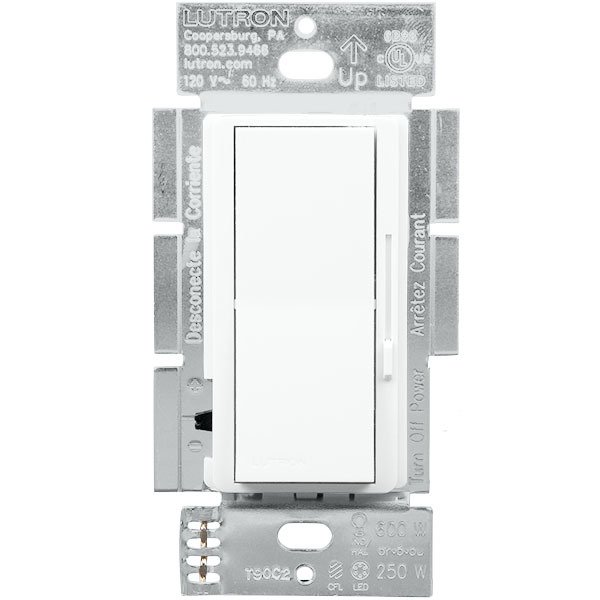Brighten Your Knowledge About Dimmers
We get a lot of questions from customers about dimmers. Sometimes they are looking for a specific model to use with a bulb or fixture. More often than not, however, they have something that only gives a type of dimmer and not an actual model number. This can be extremely confusing, especially if you aren’t aware of the different types of dimmers or what they are called. In this post, we will take look at the different types of dimmers.
How Dimmers Work
Before jumping into the different dimmers types, you first need to understated the basics of how dimmers work. In the simplest terms, dimmers adjust how energy flows through a bulb. To be more specific, they target the voltage as it travels through the bulb in a wave. To dim the light output, dimmers rapidly adjust this wave a high speed. This essentially chops the wave, which reduces the voltage and dims the bulb. How the wave is chopped determines the type of dimmer.
TRIAC Dimming
Now let’s take a look at the different dimmer types. The most common type of dimmer is a TRIAC. These standard 120 volt dimmers have been around for a long time and are generally used in homes. If you don’t recognize the name, that’s ok. These dimmers go by several other names, with the most common being forward phase. Other common names are leading edge and magnetic low voltage (MLV).
TRIAC dimmers such as the Lutron DVCL-253P and Leviton DDMX1-BLZ work by adjusting the forward part of the voltage wave, hence the name forward phase. These dimmers work best with resistive loads such as incandescent and halogens and can be used with some LED bulbs (if compatible). If you are not sure if the dimmer you are looking at is a TRIAC dimmer, check to see load type it can carry. If it operates incandescent, halogen, and LED bulbs, it is most likely a TRIAC dimmer.
Lutron DVCL-253P-WH
Electronic Low Voltage Dimming
Another type of dimmer is the electronic low voltage (ELV) dimmer. These newer, higher end dimmers were first designed to operate 12V MR16 bulbs paired with electronic low voltage transformers. They also require the use of a ground wire, making them easy to identify. When looking for ELV dimmers, you will most likely see them referred to as reverse phase or trailing edge dimmers. This is because they work by adjusting the back end of the voltage wave, which is the opposite of TRIAC dimmers. ELV dimmers are better suited for use with capacitive loads. Many manufactures, such as Soraa, recommend using ELV dimmers with LED bulbs as they provide smoother dimming and generate less noise.
0-10 Volt Dimming
The last type of dimmer is the 0-10 volt dimmer. This type of dimmer is used in commercial applications only. You will not find them in residential homes. In order to operate, two low voltage wires must first be run from the fixture’s driver directly to the dimmer switch. These two wires run direct current (DC) between 0 and 10 volts to the driver in order to adjust brightness. The lower the voltage, the dimmer the light output. Most dimmable fixtures that operate on 120 to 277 Volts will use 0-10V dimmers.
For help finding the right dimmers for your bulbs or fixture, call 1-800-624-4488 to speak to one of our lighting experts.









